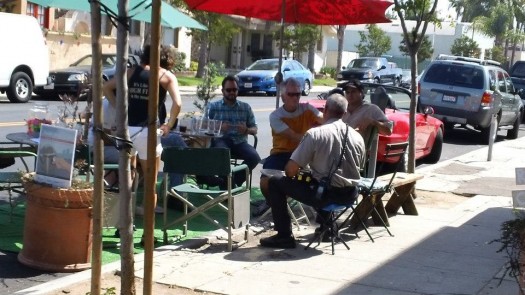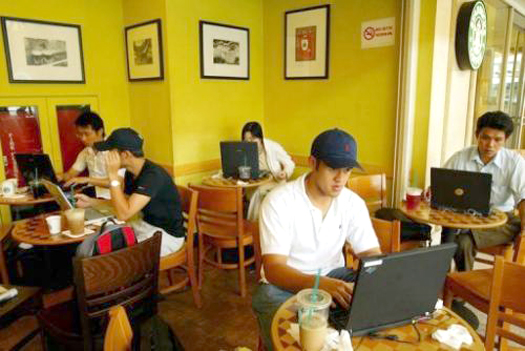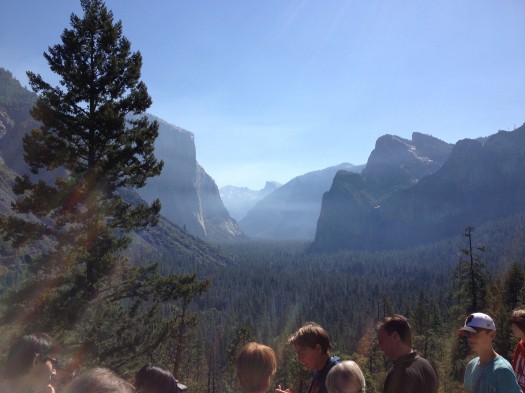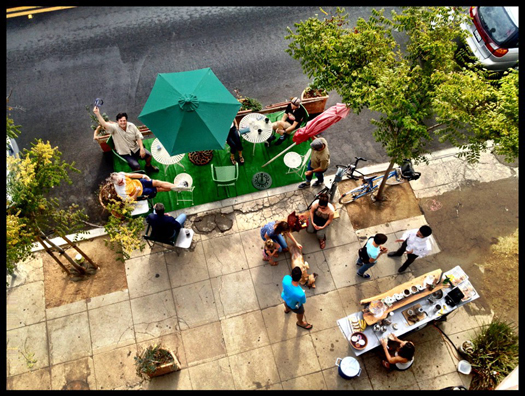A Placemaking Journal
Great Civic Space: It ain’t the size, it’s what you do with it
While hanging out in the street last Friday, against my Mother’s better childhood advice, I felt an affirmation of my belief in why we, PlaceMakers, do what we do.
A group of us neighborhood advocates, San Diego Urbanist, participated in the annual PARK(ing) Day event by creating a temporary civic space, a Parklet, in a parallel parking spot on a local Main Street. We reframed this worldwide event as a Pilot PARK(let) Project (repeat this three times) because we have two local Business Improvement Districts and a city council member working to allow for more bikeable and walkable facilities. This change from an auto-oriented business improvement model is in direct response to our community morphing into a world-class hipster destination, as we are currently positioned #13 on Forbes’ list of America’s Best Hipster Neighborhoods.

In 2005, San Francisco design firm, Rebar, transformed a single metered parking space into a temporary public park for 2-hours. An image of this transformational act went viral and changed the way we ‘see’ public spaces. This lone ‘parklet’ led to PARK(ing) Day, informing the Tactical Urbanist toolbox, and being formally adopted by San Francisco, Long Beach, Boston, and New York.
Sitting there in the street, watching the buses, cars, motorcycles, and bicycles pass us by with everybody cranking their necks to see what we were up to, these lessons were (re)learned:
1) The Street did not feel as ‘dangerous’ as we tend to expect. Our Main Street is a major north/south thoroughfare connecting our most urban streetcar neighborhoods, with every conceivable type of automobile passing through. We would only pause our many conversations when the bus, trash truck, and fire truck drove by. Being near an intersection, the cars moved slower, as well as more quietly, which conveyed a greater sense of safety. Granted, our potted planter box wouldn’t have slowed any runaway car but, as this is a nation of laws, we trusted that people would behave safely. And they did.
2) Place matters. I say this because our Parklet was visited by an interested Parking Enforcement Officer who sat with us and discussed the conundrum of city design — something ideally in pursuit of our highest public aspirations — playing out in response to fear of the midnight drunk. Importantly, the Officer offered this sage design advice: “I believe you should design these by their individual context and not a one-size-fits-all approach.” Indeed, and we should be applying this same logic to our thoroughfares and neighborhoods.

3) Civic space really does connect people. We had several pedestrians, neighbors, bicyclists and drivers stop, sit down and talk to each other. Not just small talk either. Rather than going to a coffee shop or bar and securing a space, paying the fee ($4 per cup/pint), then providing just enough body language to keep people from bothering or hitting on you… in the more public parklet, they simply sat down and engaged one another.

We spoke freely about local issues, politics, what we did for a living, and how we were connected. While the conversations were provocative, informative and, at times, humorous, the best part was that they were continuous. This reinforced the self-evident value of civic space in the United States of America.
4) America’s greatest idea, “that all men are created equal,” is realized in public space. This revolutionary rebuttal to the ‘Divine Right of Kings’ was invoked again during President Lincoln’s Gettysburg Address to begin rebuilding our nation after the Civil War. At that time, the great landscape architect, Frederick Law Olmsted, proposed Yosemite valley to be our first National Park in order to manifest this very democratic ideal and use of civic art to heal our nation.

Our little Parklet on Friday was a temporary, simple place and, while it appeared to be antithetical to the beauty and grandeur of our great Civic Spaces, its democratic spirit was still intact. As I often, perhaps too often, write, it’s the degree to which we physically bring people together to share ideas and experiences that will define our ability to not only endure but thrive in the 21st century.

–Howard Blackson
If PlaceShakers is our soapbox, our Facebook page is where we step down, grab a drink and enjoy a little conversation. Looking for a heads-up on the latest community-building news and perspective from around the web? Click through and “Like” us and we’ll keep you in the loop.








